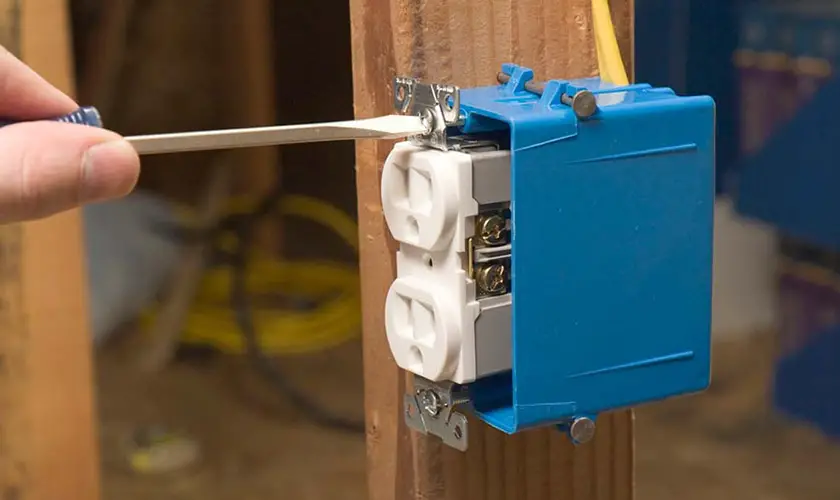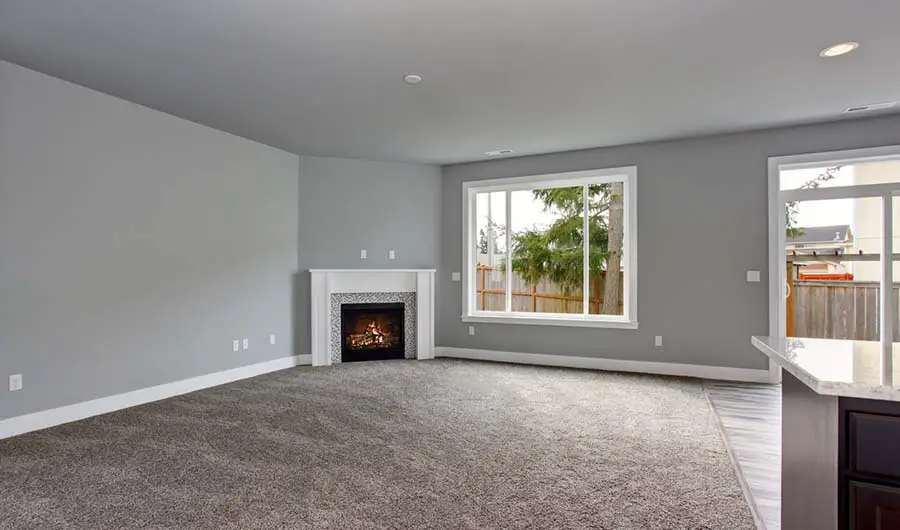When adding receptacles, you may ponder how many outlets on a 20 amp circuit. If you plan to extend your home or upgrade existing wiring, keeping within the safety limits for each circuit you install is essential. Pushing the boundaries of a circuit or a circuit breaker has potentially dire consequences for health and safety in your home.
Up to 10 outlets can safely run on a 20-amp circuit. A circuit should not run at over 80% of its load capacity. On a 20-amp circuit, this is 16 amps. The rule-of-thumb is one outlet for every 1.5 amps of the 80% maximum. The total power draw on a 20-amp circuit should not exceed 16 amps.
The intention for the design of each circuit in your home is to handle a maximum amp draw. This maximum current is dependent on the wiring installed for the circuit and the size of the circuit breaker connected.
Ensuring the wiring is safe and preventing overloading is easy, provided that you stay within the specified limits for the circuit. We will show you how to ensure your 20-amp circuit is not overloaded.
Get FREE estimates from licensed electricians in your area today. Whether you need to replace an outlet, hang a ceiling fan, a new electrical panel, or repair wiring, We Can Help!

How Many Outlets on a 20 Amp Circuit?
The wiring and the installed circuit breaker are the defining components that determine the electrical load that the circuit can handle.
When planning the home’s circuitry, each circuit is sized, including wire gauge and circuit breaker size, for the expected size and type of appliances connected to the circuit.
According to the American Wire Gauge or AWG standard, the minimum wire gauge size for a 20-amp circuit is 12-gauge. Connecting a 20 amp circuit breaker to the 12-gauge wire creates a circuit rated as a 20-amp circuit.
Here is a quick wire-gauge chart for standard circuit sizes for your convenience.
| Circuit | Wire Gauge |
|---|---|
| 15-amp | 14-gauge |
| 20-amp | 12-gauge |
| 30-amp | 10-gauge |
| 40-amp | 8-gauge |
| 50-amp | 6-gauge |
| 60-amp | 4-gauge |
How do you know the number of receptacles or outlets you can connect to the circuit? The answer is quite simple and can be derived using a basic calculation. The National Electrical Code (NEC) stipulates that a circuit can draw continuous current up to 80% of its rated load. These electrical codes are set to meet safety standards for professional electricians to follow.
On a 20-amp circuit, the 80% continuous capacity rule restricts the maximum constant current to 16 amps. The calculation to work this number out is as follows.
20 amps * 0.8 = 16 amps
The NEC provides leeway for appliances drawing a spike current that will exceed this 80% limit for a short time but not for extended periods. The reasoning is that a constant current draw close to the circuit’s maximum capacity will cause the conductors in the wiring to generate heat, which can pose a safety risk.
A rule-of-thumb measure establishes how many outlets you can connect to the circuit without exceeding the 80% usage limit. This measure is one outlet for every 1.5 amps up to the 80% maximum usage. Here is the calculation for our 20-amp circuit.
16 amps / 1.5 = 10.66 outlets
We round down the calculation result to achieve our ten outlet maximum on a 20-amp circuit.
What if You Put More Than 10 Outlets on a 20-Amp Circuit?
When there are insufficient electrical outlets in a room in your house, the possibility of overloading a circuit becomes a genuine problem.
Most people first purchase a power strip to connect multiple devices to a single outlet. The extender may seem like a solution to limited outlets, but it can be dangerous, particularly if the surge protector does not have any overload protection.
The best option in this circumstance would be to split the number of circuits over two 20-amp circuits. For example, if you need 12 outlets, the best solution would be to install two 20-amp circuits and put six outlets on one circuit and six on the other. This split will give you capacity on both circuits for future expansion, should you need it.
How Many Outlets and Lights Can You Put on a 20 Amp Circuit Breaker?

It is preferable to keep lights and outlets on separate circuits. The NEC allows for connecting light fixtures to a 20-amp circuit, but it is best to put lights on their own, independent circuit from a practical point of view.
The general standard is to wire lights on 15-amp circuits and outlets on 20-amp circuits. However, it is possible to wire a light into a 20-amp circuit and be within code.
If you decide to go this route, it does not change the circuit’s number of tamper-resistant outlets. Each light you include in the wiring would take the place of one outlet.
Thus, if you wanted to include two light fittings in the circuit, you would have the scope to install eight electrical outlets for a maximum of ten outlets.
While you can put a 15-amp outlet on a 20-amp circuit, if you put a 20-amp outlet on a 15-amp circuit, you’re more likely to exceed the maximum load on the circuit breaker’s limits.
Selecting the correct wire sizes for 120-volt circuits is essential to ensure a secure current supply. A 15-amp circuit should be fitted with a 14-gauge wire with a 15-amp circuit breaker or fuse for optimal protection.
For 20 amp circuits, 12-gauge or 10-gauge wire must be combined with a 20 amp breaker or fuse for maximum security.
To summarize, the sum of outlets and lights on the circuit must not exceed ten, the maximum number of outlets allowed on the circuit.
What Can Run on a 20-Amp Circuit?
The intention of 20-amp circuits is not to run heavy-duty household items such as cooktops, stoves, high capacity refrigerators, washing machines, or dryers.
20-amp circuits are suitable for running smaller household appliances. The NEC requires at least two 20-amp circuits installed in a kitchen for the countertop. This regulation caters to medium-duty kitchen appliances used at the countertop level without overloading the outlets.
The following devices and appliances can connect to single 20-amp circuit outlets.
- Microwave ovens
- Blenders
- Toasters
- Mixers
- Home entertainment systems
- Television
- Freestanding lamps
- Vacuum cleaners
- Space heaters
Some heavy-duty appliances like dishwashers, refrigerators, and clothes washers require 20-amp dedicated circuits.
Even though the number of 20-amp receptacles on a circuit can be the appropriate number, it can be overloaded. Many people plug too many devices into the outlets with extender plugs.
It is crucial to ensure that the total Watts on the system do not exceed the circuit wattage. With the following equation, you can calculate the maximum wattage that can run on a 20-amp circuit.
Max amps * volts = watts
16 amps * 120 volts = 1920 watts
The figure of 1920 watts represents the maximum wattage that can run on the circuit. Using this number as the upper limit, we can tally up the Watts of all the devices connected to the outlets. You can find the Watts that each device uses printed on the service plate for each device.
Tally up the Watts for each device connected to the circuit. This total should be less than the total number of Watts allowed on the circuit, which, in the case of a 20-amp circuit, is 1920 watts.
Conclusion
Let’s recap how many outlets can be on a 20 amp circuit. The maximum number of electrical outlets you can run on a 20-amp circuit is ten. Ten outlets will power devices and appliances without exceeding the 80% capacity rule for residential electrical wiring.
If you need additional outlets, the best solution would be to install a second 20-amp circuit and divide the number of outlets equally across the two circuits.
Overloading a circuit is dangerous, so if you are unsure of your wiring or calculations, run them by a qualified electrician for confirmation.








